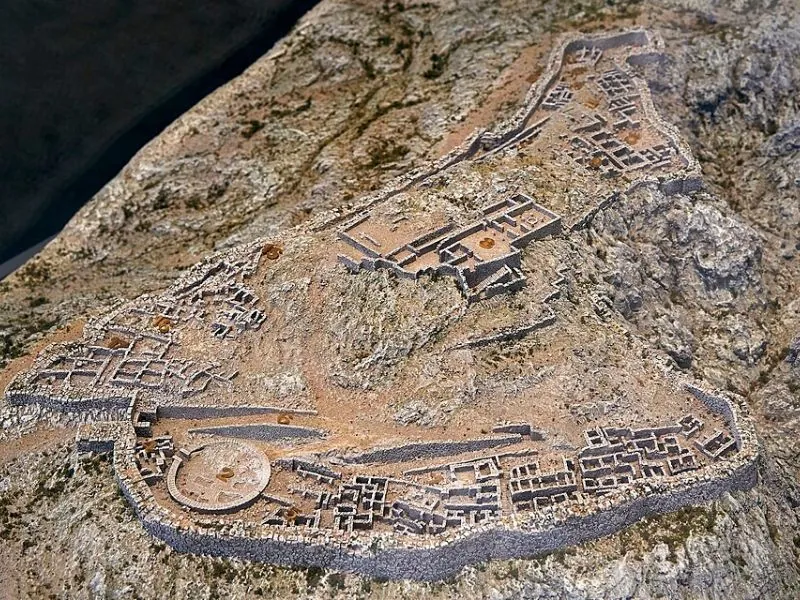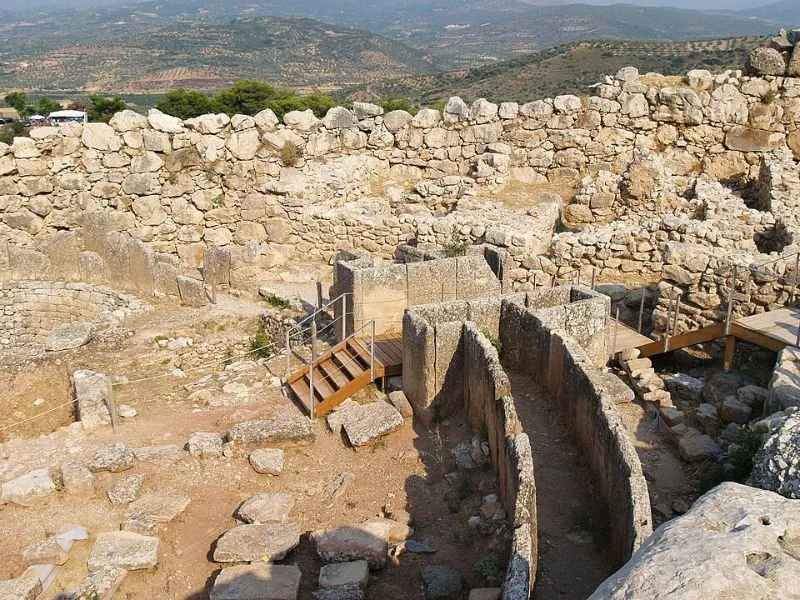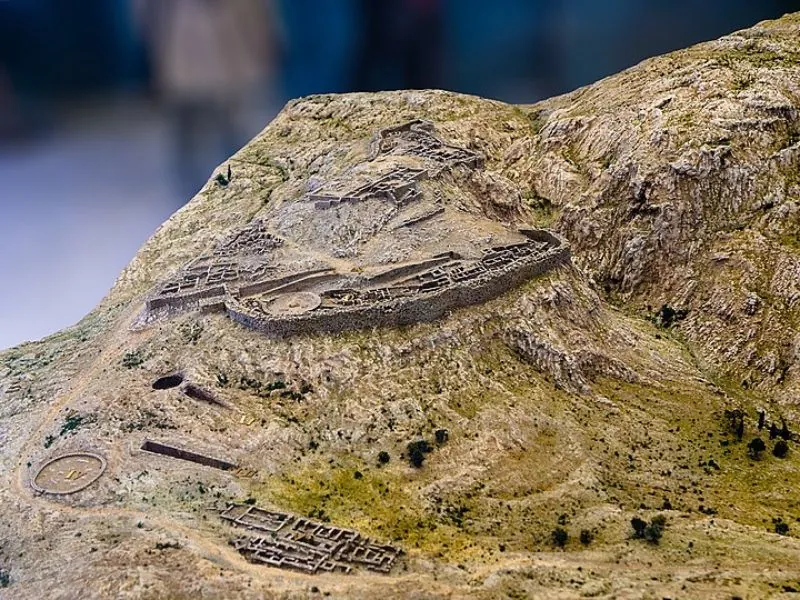
Gold masks and Cyclopean walls steal the headlines, yet the Granary of Mycenae kept the kingdom alive.
Hidden just inside the Lion Gate, this warehouse of massive clay jars stored enough wheat and barley to feed warriors, craftsmen, and palace bureaucrats throughout drought or siege. Understanding its design and accounting system reveals a sophisticated economy where grain equalled power.

Archaeologists trace the complex as a long, rectangular hall immediately south-west of the gateway ramp. Low stone socles outline three parallel aisles, each peppered with circular cut-outs—the sockets where pithoi up to 1.7 m tall once stood.
Smooth lime-plastered floors slope gently toward a drain, proof that Mycenaean engineers worried about spilled grain, vermin, and damp as much as royal pageantry.
Each pithos held roughly 1,000 litres. With at least forty jars in situ, the Granary of Mycenae could cache some 40 tonnes of cereal—enough to supply 3,000 people for a month or garrison 800 soldiers through a protracted siege.
Charred layers of einkorn and two-row barley sprinkled across the floor testify to one catastrophic fire, but also provide carbon samples that confirm Late Helladic IIIB occupation (c. 1250 BCE).
Farmers across the Argolid plain harvested in May (barley) and June (wheat). Ox-drawn carts trundled up the North Gate, where scribes tallied sacks on damp clay tablets before sealing the pithoi lids with hammered clay disks impressed by the wanax’s ring. Fresh thyme or bay leaves burned inside to deter weevils—a Bronze-Age fumigation that modern experiments show reduces insect hatch by half.

Several palm-sized tablets found near the store-rooms list siton (wheat) and krithon (barley) disbursements to armour-smiths, chariot crews, and festival kitchens. One fragmentary entry reads: “de-do-ma-i ku-ra-si 2 te-tu-ro-we 20”—“Delivered to the bronze-workers: 2 measures wheat, 20 measures barley.”
The accounts show that the Granary of Mycenae doubled as payroll office, with grain replacing coin centuries before minted money.
Carbonised kernels form a distinct horizon about 10 cm thick—clear evidence that the granary caught fire, likely during the site-wide destruction circa 1190 BCE. Yet the blaze also kiln-dried the floor layer, preserving botanical clues.
Weed seeds suggest crops from both upland terraces and lowland floodplains, indicating the palace drew tribute from diverse micro-climates to hedge against regional failures.
Linear B lists a job title si-to-po-qo—“grain-watcher.” These men inspected seals, swept floors with broom sage, and recorded temperature and humidity the Bronze-Age way: by hanging strips of dyed wool and noting how quickly they dried.
When the cistern stair echoed with bucket chains, grain-watchers coordinated ration hand-outs, calculating shares in finger-tall heaps before tipping them into woven sacs.

Heinrich Schliemann first cleared the hall in 1874, marvelling at “earthen tubs like Canaanite wine jars.” Systematic sieving in the 1990s recovered einkorn, emmer, bread wheat, barley, vetch and darnel—proof that palace granaries stored fodder crops alongside human staples.
Ιsotopic analysis of charred wheat indicates irrigation from spring-fed channels, hinting at managed fields beyond today’s vineyards.
Long after tourists leave the Lion Gate, the quiet footprint of the Granary of Mycenae reminds us that empires rise on full stomachs. Forty tonnes of grain, meticulously tallied on clay tablets and guarded behind Cyclopean walls, fuelled armies, artisans and ritual feasts.
In a single hall of pithoi, Mycenaean kings turned barley into bronze, wheat into loyalty, and storage into strategy—proof that the real treasure of Agamemnon’s capital was measured not in gold, but in grain.